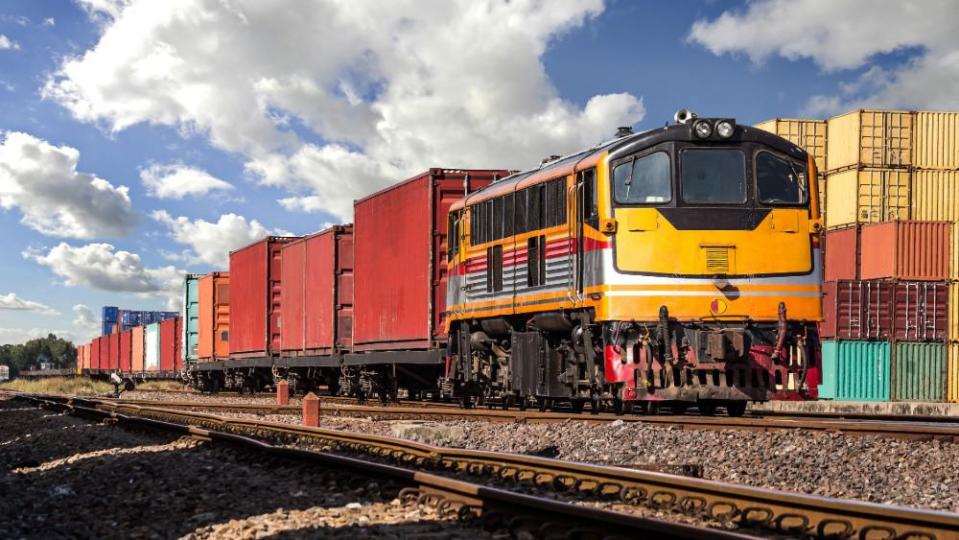Why Canadian National Railway (TSX:CNR) Stock Fell 2% in August

Canadian National Railway (TSX:CNR)(NYSE:CNI) stock fell 2% last month as the S&P/TSX Composite Index booked a slight gain. That’s a rare underperformance. Over the last five years, Canadian National stock has risen five times more than the TSX overall. Since 2006, shares have increased by 404%, roughly 10 times the average TSX return.
While it’s important to never read too much into short-term price action, there were some recent events that may have a long-term impact on the stock. Let’s dive in.
What happened?
Canadian National released second-quarter earnings in late July, making August a light-news month. Still, it’s valuable to review what happened during the earnings release. Adjusted EPS came in at $1.73, beating consensus estimates by $0.07. Official GAAP EPS was $1.88, outpacing estimates by $0.22. Revenue also beat expectations, coming in at $3.96 billion — a 9% growth year over year.
The earnings beat was joined by the declaration of a $0.5375 per quarterly dividend — the same as the previous quarter. The dividend yield now stands at 1.7%. While there wasn’t an increase in the payout, I’d expect an increase over the coming quarters. Over the last decade, the dividend has grown by 12.5% per year. The company has bumped the payout higher each year since 1996.
The positive earnings were a relief, for the week before, competitor CSX (NYSE:CSX) roiled the market with a troubling forecast. In contrast to Canadian National, CSX posted weaker-than-expected results and cut its revenue forecast. On the firm’s conference call, CSX CEO James Foote said that today’s economic backdrop is “one of the most puzzling I have experienced in my career.” He’s been in the business since the 1980s. “Both global and U.S. economic conditions have been unusual this year, to say the least, and have impacted our volumes. You see it every week in our reported carloads,” he added.
CSX stock fell 10% on the revelation, but so far, Canadian National has avoided any significant drops. That’s surprising considering more bad news hit on August 13, when research firm IHS Markit noted that railroads are losing their price advantage against trucking. “The dwindling pricing advantage means that there is less financial incentive for shippers to transport cargo ‘intermodal’ — that is via rail, where it is onloaded and offloaded by trucks — rather than just utilizing trucking for the entire length of the trip,” the firm said.
What to expect
While Canadian National shares were off 2% last quarter, it’s a surprise they weren’t pressured even more. Competitors are forecasting an uncertain future, and price competitiveness seems to be eroding. Canadian railroads are particularly exposed to commodities like coal and crude oil, which represent high-margin opportunities that may be in trouble.
According to Moody’s, railroads could face US$5 billion in lost revenue due to the secular decline of coal consumption in North America. Roughly 5% of Canadian National’s revenue comes from coal. Crude by rail, meanwhile, is one of the company’s most valuable sources of profits. That could come under fire given new international regulations may make 20% of all oil sands production economically unviable.
Long term, Canadian National is still an incredibly strong business with a respectable moat, but 2020 could present new headwinds that the market isn’t prepared for. Shares trade at 19.4 times forward earnings — a slight premium to their five-year average of 19.1 times and a big premium versus the current industry average of 16.9 times. The stock isn’t pricing in any near-term trouble — that’s likely a mistake.
More reading
David Gardner owns shares of Canadian National Railway. The Motley Fool owns shares of Canadian National Railway and Moody's. Fool contributor Ryan Vanzo has no position in any stocks mentioned. Canadian National Railway is a recommendation of Stock Advisor Canada.
The Motley Fool’s purpose is to help the world invest, better. Click here now for your free subscription to Take Stock, The Motley Fool Canada’s free investing newsletter. Packed with stock ideas and investing advice, it is essential reading for anyone looking to build and grow their wealth in the years ahead. Motley Fool Canada 2019

 Yahoo Finance
Yahoo Finance 